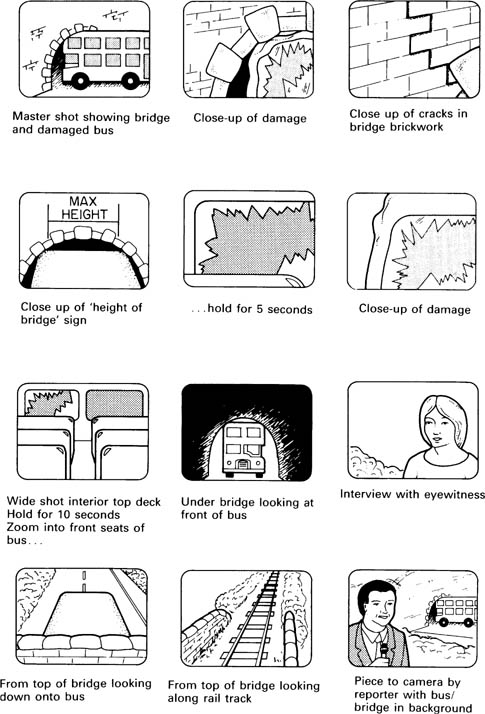As well as the technological requirements needed to edit together two shots, there are subtle but more important basic editing conventions to be satisfied if the viewer is to remain unaware of shot transition. It would be visually distracting if the audience’s attention was continually interrupted by every change of shot.
Moving images in film or television are created by the repetition of individual static frames. It is human perception that combines the separate images into a simulation of movement. One reason this succeeds is that the adjacent images in a shot are very similar. If the shot is changed and new information appears within the frame (e.g. what was an image of a face is now an aeroplane), the eye/brain takes a little time to understand the new image. The greater the visual discrepancy between the two shots the more likely it is that the viewer will consciously notice the change of shot.
A basic editing technique is to find ways of reducing the visual mismatch between two adjacent images. In general, a change of shot will be unobtrusive:
• |
if the individual shots (when intercutting between people) are matched in size, have the same amount of headroom, have the same amount of looking space if in semi-profile, if the lens angle is similar (i.e. internal perspective is similar) and if the lens height is the same; |
• |
if the intercut pictures are colour matched (e.g. skin tones, background brightness, etc.) and if in succeeding shots the same subject has a consistent colour (e.g. grass in a stadium); |
• |
if there is continuity in action (e.g. body posture, attitude) and the flow of movement in the frame is carried over into the succeeding shot; |
• |
if there is a significant change in shot size or camera angle when intercutting on the same subject or if there is a significant change in content; |
• |
if there is continuity in lighting, in sound, props & setting and continuity in performance or presentation. |
As we have already identified, the basis of all invisible technique employed in programme production and specifically in continuity editing is to ensure that:
• |
shots are structured to allow the audience to understand the space, time and logic of the action so each shot follows the line of action to maintain consistent screen direction to make the geography of the action completely intelligible; |
• |
unobtrusive camera movement and shot change directs the audience to the content of the production rather than the mechanics of production; |
• |
continuity editing creates the illusion that distinct, separate shots (possibly recorded out of sequence and at different times), form part of a continuous event being witnessed by the audience. |
New order of shots after editing

VISION |
SOUND |
WS of bus stuck under bridge |
Voice-over reporter describing circumstances |
CU damage |
|
CU damage |
|
CU sign – ‘height of bridge’ |
|
WS of bus |
|
MCU eyewitness |
Eyewitness description |
WS interior of bus |
|
CU interior of bus |
|
Front of bus |
|
Eyewitness |
|
From top of bridge looking down on bus | |
Rail track on bridge |
V/o reporter |
WS of bus under bridge |
|
Reporter to camera, bridge & bus background | |
